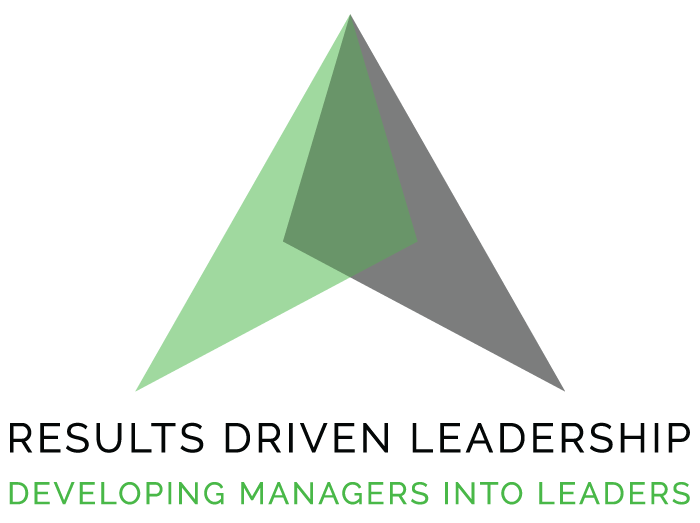
Most great leaders recognize that you are in the people business no matter what business you are in.
Now let’s talk about balance. People often debate what makes a better leader: the no-nonsense, results-focused type or the motivational, people-focused type. New research has provided the answer–neither.
James Zenger surveyed over 60,000 team members to see which leadership characteristics made leaders “great” in the eyes of their team members. Two of the characteristics that Zenger looked at were “results-focus” and “people-focus,” and he found that neither characteristic consistently produced outstanding leadership.
Leaders who primarily focused on results were outstanding just 14% of the time, and leaders who focused on people were seen as exceptional only 12% of the time.
However, leaders who were able to balance their approach and focus equally on results and people were seen as excellent a whopping 72% of the time (which, according to a study by David Rock, is less than 1% of all leaders) In other words, results-focus and people-focus are weak predictors of outstanding leadership individually or on their own. It’s the potent combination of the two that consistently makes leaders great.
“If your actions inspire others to dream more, learn more, do more, and become more, you are a leader.” – John Quincy Adams
Want to become part of the 1%?
It’s not complicated, but it’s hard because it does require your commitment to changing your leadership habits and behavior mindset. Use the following steps to enhance your professional development.
WARNING! No instant gratification should be expected, my friends. This is not flipping a switch, and magically results begin to improve.
The steps I’m sharing today come with time, deliberate practice, and the appropriate amount of commitment. You will hop from bed to bed like goldilocks until you find the one that is, ahhh…just right. The improvements will come, and your life as a leader will be much more gratifying and successful.
This is all part of the Transformational Triangle of Change.
Improve You-This Creates Improvements In Your People-Impacting Positive Results For Your Company.

What are the Five Steps?
Get Comfortable With Difficult Conversations
How??? Learn SBIR. Specific Behavior Impact Results. Carefully constructing feedback is the critical first step. Understand and embrace this. It is specific behaviors that drive outcomes and results. Understand that certain activities lead to the performance achievement you want from your team. If you want to point out how well they are doing. Use SBIR. If you need to give them developmental feedback, use SBIR.
This starts with you getting comfortable having potentially “Difficult Conversations.”
A Difficult Conversation Is Anything You Find Hard to Talk About Due to Fear of the Consequences.
The Dilemma?
Avoid or Confront?
- If we try to avoid the problem, we’ll feel taken advantage of
- Our feelings will fester
- We’ll wonder why we didn’t stick up for ourselves
- Plus, we’ll rob each other of a successful resolution.
Each Difficult Conversation Is Really Three Conversations
- The “What Happened?” Conversation – disagreement about what happened.
- The feelings Conversation – each conversation takes into account feelings and self-esteem. Even if they are not addressed, they leak in.
- The Identity Conversation – the conversation we each have with ourselves about what the situation means to us. Is this attacking our self-esteem?
Master Difficult Conversations With Our Online Course
There is much more to learn, but to get started, here are the SBIR Steps.
- Situation: In what situation did you observe this person doing something?
- Behavior: How did you find their behavior in that situation to be?
- Impact: What were the impact of this behavior, in this situation, on you, the company, and others?
- Response: What is your response, and what questions might you have for this person?
Being specific with your team member about what they said or did, helps them understand exactly what worked or what caused an issue. At the same time, this SBIR approach motivates them either repeat it or avoid it, depending on the situation.
You have to be tactful and genuine to be inspirational. If you want the same improved results, reward the specific behavior that led to that result. Reverse this for developmental feedback. What behavior specifically led to them performing poorly, leading to unacceptable results? Great leaders learn this tactic and deploy it to get the most out of their best people.
2. Collaborate to Gain Employee Buy In
Use the power of your collaborative team to improve results. As the leader, you will have to get real with yourself. You don’t know it all. When you have a result you want to change, put your team on it. Have them be a part of putting together a good plan of attack. They will foresee the unintended consequences and unforeseen obstacles that you may miss.
Plus, when it is their idea or plan, how much more likely are they to be committed and fully bought into improving the result? I personally used this approach in my corporate career extensively.
Want to fix a problem? Just put your best people on it.” Leaders capable of blending a people-focus into their results-oriented plans select the ideal people and know their strengths and weaknesses and how they can work together.
Start Here to Discover the Step By Step Approach to Gaining Employee Buy In
3. “GSD” with Effective Meeting Skills
Learn to facilitate meetings into a genuinely productive structure. One that allows everyone to participate and be a part of them. Your meeting must be Results Focused. Create dialog and develop a pool of knowledge from every participant’s contribution.
Every meeting has the “Alpha” that can dominate the conversation. Often that is the leader (you). Stop It!
Research shows that poorly structured meetings stifle creativity and hinder teams from reaching reasonable solutions. Every opinion must be heard and valued. The meeting can’t be hijacked by “That Guy” who loves to hear themselves talk. You lose the power of the meeting, and the rest of the participants go to passive mode to end the pain.
You have to be able to be constructive if bad ideas come up. The wrong jab or quip will end that person’s participation in the future. When results-focused leaders bring a people-focused mentality to the table, they create the right environment for new ideas to thrive. These leaders can draw out as many good ideas from their team as possible while prudently steering a process that creates workable solutions.
Stop Having Unproductive Meetings
4. Surround Yourself with Great People
It starts at the beginning. Profound huh? But it does begin with hiring the right people. Great leaders have a great hiring system. Hiring slow is critical to having the very best people on the bus. Effective hiring leads to high levels of performance, a strong workplace culture, and a high retention rate.
So often, new hires are made based primarily on experience. Studies show that experience has the lowest impact on a new hire’s success (less than 10%). If that person is not a good social or cultural fit, you just put a time bomb into your organization.
Likewise, hiring someone who is an excellent social fit and does not have the traits and skill set to do the job properly creates another set of problems. Great leaders know how to find team members who do their jobs effectively and are good social and cultural fits. This kind of hire builds morale and improves your bottom line.
Start Hiring Great People By Clicking Here
5. Create a High-Performance Culture
Have some fun. Making the workplace fun is often expensive and does not always give you the results you aim for. Putting in a ping pong table or foosball table in the breakroom is not the cure. Having bagel Monday or Pizza Friday without it being tied to a result is a big waste of money and can create its own set of problematic issues.
On the other end of the spectrum, bosses who keep it “All Business” make for a dull, uninspiring workplace. Use food and fun as rewards for significant successful team achievements. Outstanding leaders know that balance is critical. Proper balance prevents entitlements, improves workplace culture, and drives camaraderie improvements. Believe me; it gets results.
Want a High-Performance Culture? Start Here
Bringing It Home
Great leaders balance these approaches. They also enjoy tremendous results.
Effective leadership includes exhibiting a strong character. Leaders demonstrate honesty, integrity, trustworthiness, and ethics. Leaders act in line with how they speak and earn the right to be responsible for others’ success in the company. Strong leadership involves clear communication skills.
These Five Leadership Topics will give you the inertia to move from a good leader to a Great Leader and allow you all the sense of confidence, accomplishment, and career growth you desire.





